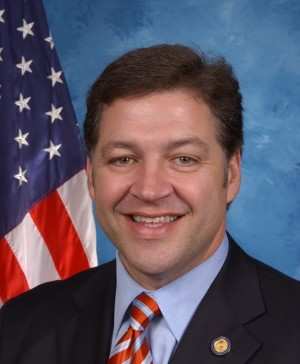Tue, Apr 23, 2013
Says Agency's Management Of Sequestration Cuts Is Politically Motivated
The announced breakdown of the five percent cut in the budget of the FAA due to sequestration hasn't been particularly well accepted by several people, among them the chair of the House Transportation Committee which oversees the agency.

The chair of that committee, Congressman Bill Shuster (R-PA) (pictured), issued a strongly-worded statement Friday after DOT Secretary Ray LaHood and FAA Administrator Michael Huerta announced that the five percent budget reduction due to sequestration would result in the furloughing of thousands of air traffic controllers and potentially disrupt the travel plans of the flying public.
“The FAA’s management of sequestration is quickly going from bad to worse," Shuster said. "Given that the FAA’s budget increased more than 100 percent over the last 15 years, finding five percent in savings shouldn’t need to significantly impact our nation’s aviation operations. Businesses and families across the country face these issues in their budgets every day without massive impacts. We know that the FAA has the flexibility to reduce costs elsewhere, such as contracts, travel, supplies, and consultants, or to apply furloughs in a manner that better protects the most critical air traffic control facilities. Yet rather than take this approach, the Administration has made choices that appear designed to have the greatest possible impact on the traveling public."
According to Shuster, there are $2.7 billion in non-personnel Operations costs that should be examined before FAA personnel are furloughed. Operations covers both personnel costs AND non-personnel costs – such as contracts, travel, supplies, and consultants. Examples of non-personnel costs include nearly $500 million for consultants, and $325 million in supplies and travel. In addition, the FAA has 46 aircraft that cost $143 million to operate.
“What’s perhaps most troubling is that the FAA has known about the sequester for almost two years and gave Congress and the airline industry less than a week’s notice about its implementation plans. This disregard for the American public is indicative that the Administration views the sequester as an attempt to score political points rather than address real issues and find real savings in a bloated federal bureaucracy.”
More News
“While legendary World War II aircraft such as the Corsair and P-51 Mustang still were widely flown at the start of the Korean War in 1950, a new age of jets rapidly came to >[...]
Decision Altitude (DA) A specified altitude (mean sea level (MSL)) on an instrument approach procedure (ILS, GLS, vertically guided RNAV) at which the pilot must decide whether to >[...]
Aero Linx: National Aviation Safety Foundation (NASF) The National Aviation Safety Foundation is a support group whose objective is to enhance aviation safety through educational p>[...]
Also: Cal Poly Aviation Club, $$un Country, Arkansas Aviation Academy, Teamsters Local 2118 In response to two recent general aviation accidents that made national headlines, more >[...]
“The FAA is tasked with ensuring our skies are safe, and they do a great job at it, but there is something about the system that is holding up the medical process. Obviously,>[...]
 Aero-News: Quote of the Day (04.28.25)
Aero-News: Quote of the Day (04.28.25) ANN's Daily Aero-Term (04.28.25): Decision Altitude (DA)
ANN's Daily Aero-Term (04.28.25): Decision Altitude (DA) ANN's Daily Aero-Linx (04.28.25)
ANN's Daily Aero-Linx (04.28.25) Airborne-Flight Training 04.24.25: GA Refocused, Seminole/Epic, WestJet v TFWP
Airborne-Flight Training 04.24.25: GA Refocused, Seminole/Epic, WestJet v TFWP Aero-News: Quote of the Day (04.29.25)
Aero-News: Quote of the Day (04.29.25)



